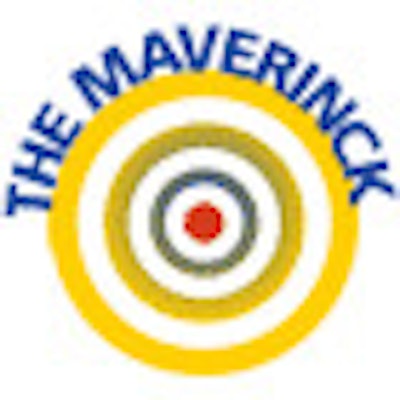
Dr. Alexander Margulis was born in 1921 in Belgrade. In 1950 he graduated from Harvard Medical School. Thirteen years later he became professor and chairman of the department of radiology at the University of California, San Francisco, stayed there for 26 years, and turned the department into the showcase of U.S. radiology. Since 2000, he has been professor of radiology at Weill Medical College of New York's Cornell University. Margulis is an honorary member of many radiological societies throughout the world. His impressive CV fills a small booklet.
He was the professor of radiology. I remember how honored we were when we arranged the first conference on the rational use of MRI, held in Switzerland some 20 years ago, and Margulis contacted and endorsed us -- and gave a well-founded and well-balanced opening lecture. He advised many institutions and foundations, and one would meet him at most major and many minor congresses all over the world -- indefatigably friendly, urbane, sophisticated. Until today, nobody has truly replaced him as the global leader of radiology.
 Dr. Peter Rinck, PhD, Maître de Conférence/adjunct professor of medical imaging at the University of Mons, Belgium.
Dr. Peter Rinck, PhD, Maître de Conférence/adjunct professor of medical imaging at the University of Mons, Belgium.
He has written several books. Today I want to write about one he published in 2011, perhaps for his 90th birthday: "How to rise to the top ... and to stay there!"[1]. It's the last in a series of three; they are not his memoirs -- although personal experience shines through -- and have little or nothing to do with radiology or medicine at large. This last book is about leadership, a business and career manual, seasoned with the ideas of Sun Tzu, Clausewitz, and Machiavelli -- and the American way of life.
The book covers all basic questions -- and, more so, questions you never thought about or dared ask. He describes basic administrative hierarchies; the importance of mentors; the different paths of career advancement in academia and business; whistle blowing, transparency, and computer literacy; doing well in a job interview; how to choose between job opportunities; gender, dress, physical appearance, even offices and furniture.
He also covers the common topics of politics: "Be always friendly and courteous with everyone, no matter what their position is, and never gossip." And: "Be very careful in choosing friends. Wrong choices will hurt you." He talks about how to make your new chief an ally in building your career and what to do if your chief wants to get rid of you.
Economy, friends, societies, marriage, family: everything is considered; as is how to run meetings, selecting one's deputies, gaining respect, conflicts of interests, hiring and firing, entertaining visitors and employees in restaurants or elsewhere -- and how to arrange your private and social life.
Among the pros of climbing to the very top of the ladder, Margulis points out: "The government, or even the country's president, may ask you for advice ... you may be invited to address international gatherings such as the World Economic Forum meeting in Davos, Switzerland." But there are cons too: the loss of freedom and the destruction of your family, for instance.
Many years ago, I read a book on the same topic, though it was written in a completely different way. The title is "How to succeed in business without really trying", and the author is Shepherd Mead[2]. The book describes the step-by-step business career of a fictional character, J. Pierrepont Finch, and was turned into a very successful Broadway musical comedy and won, among many other awards, the Pulitzer Prize.
However, like the Bible or the Talmud -- it's all a question of exegesis, or interpretation. Mead's book was a satirical description of the ascension to the top; Margulis' guidance and instructions are a serious primer -- or does he take the reader for a ride? No doubt, his collection of observations and advice is comprehensive, and he paints the ideal picture of the benevolent ruler of a company or academic institution, but in most instances in real life this paint has long come off.
More so, I doubt whether one can learn leadership from the book of a unique personality -- either you are a born leader and have the ingredients in you, or you don't. If the readers possess them, they will profit from Margulis' advice. However, for the rest, the sad conclusion remains: As acquiring an MBA doesn't turn the student into a good manager or businessman, reading this book won't make you a leader. I imagine that Margulis knows that too. Otherwise there would be hundreds of Margulises around in radiology. Still, this treatise is exquisitely informative and entertaining even if the reader doesn't have the qualities or plainly doesn't want to become a leader.
And there is the other side of the coin, the gap between reality and theory; you just have to look around -- as Mead puts it in the first lines of his book:
"Let us assume you are young, healthy, clear-eyed, and eager, anxious to rise quickly and easily to the top of the business world. You can! If you have education, intelligence, and ability, so much the better. But remember that thousands have reached the top without them. You, too, can be among the lucky few."
Does the same hold true for radiology? No doubt!
References
- Margulis AR. How to rise to the top ... and stay there! A leadership manual. New York, Heidelberg: Springer Publishers; 2011.
- Mead S. How to succeed in business without really trying. New York: Simon and Schuster; 1952.
The comments and observations expressed herein do not necessarily reflect the opinions of AuntMinnieEurope.com, nor should they be construed as an endorsement or admonishment of any particular vendor, analyst, industry consultant, or consulting group.



















